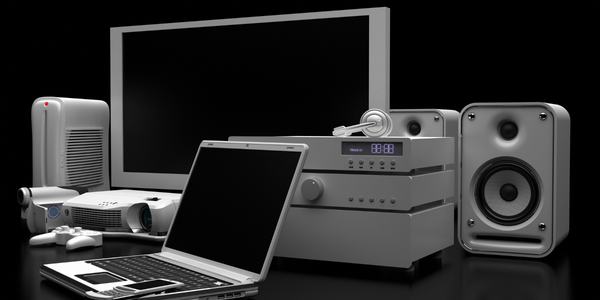下载PDF
Revitalizing Public Service with Process Automation: A Case Study on County Court of Victoria
技术
- 基础设施即服务 (IaaS) - 公共云
- 平台即服务 (PaaS) - 应用开发平台
适用行业
- 电子产品
- 造纸
适用功能
- 质量保证
用例
- 库存管理
- 人员跟踪与监控
服务
- 系统集成
挑战
维多利亚县法院每年审理约 12,000 起案件,正在处理大量的文书工作。现有的遗留案件管理系统不全面且难以使用。法院需要对其大量文书工作管理进行现代化改造,但不确定从哪里开始或使用哪种技术。第一个需要注意的流程是方向信函工作流程,它生成了数百封必须单独打印和分配的信函。下一个挑战是复杂的手动审核和合规流程,需要从不同位置提取文件,并且由于缺乏对所有活动的自上而下的视图而难以管理。最后,法院面临着收集可能未记录在案件管理系统中的抗辩或审判案件信息的挑战。现有的方法已经过时且支离破碎,需要将纸质调查问卷转换并输入电子表格中。
关于客户
维多利亚县法院是一个位于澳大利亚的公共部门组织。它每年审理约 12,000 起案件,包括刑事和民事案件,对除谋杀和叛国罪之外的所有刑事案件拥有管辖权。法院为维多利亚州 640 万人民提供服务,并致力于提供及时的服务。然而,法院正面临着繁重的文书工作和难以使用的遗留案件管理系统的困扰。法院认识到需要对其大量文书工作管理进行现代化,并寻求一种数字化和自动化的解决方案来取代其纸质案件管理流程。
解决方案
法院实施 Nintex K2 Five 来数字化其纸质流程并以电子方式捕获信息。该软件帮助法院连接不同的IT系统并取代纸质流程。 K2 Five 简化了指示信函工作流程,该系统与法院的 iManage CRM 系统集成。该软件有效地将文档发送给正确的一方,并分配适当的优先级。对于审计和合规性,K2 Five 基于任务的系统提供了需要在不同法院执行的统一审计列表。系统将审核流程发送给适当的所有者,并跟踪即将进行的审核,自动分配任务。为了收集案例信息,i2 Management 使用 K2 Five 构建了 SmartForm,取代了纸质表格。新方法允许法院提取更有意义的数据并将其存储在数据仓库中。
运营影响
数量效益
相关案例.

Case Study
Remote Temperature Monitoring of Perishable Goods Saves Money
RMONI was facing temperature monitoring challenges in a cold chain business. A cold chain must be established and maintained to ensure goods have been properly refrigerated during every step of the process, making temperature monitoring a critical business function. Manual registration practice can be very costly, labor intensive and prone to mistakes.

Case Study
Wireless Improves Efficiency in Compressed Air Systems
Hollingsworth and Vose wanted to improve the efficiency of their compressed air system, lower the electricity expense component of manufacturing cost in their commodity industry, and conserve energy leading to lowered greenhouse gas emissions. Compressed air systems degrade over time and become leaky and inefficient. Hollingsworth and Vose wanted to increase the frequency of system inspections without paying the high cost of manual labor.

Case Study
Cloud Solution for Energy Management Platform-Schneider Electric
Schneider Electric required a cloud solution for its energy management platform to manage high computational operations, which were essential for catering to client requirements. As the business involves storage and analysis of huge amounts of data, the company also needed a convenient and scalable storage solution to facilitate operations efficiently.

Case Study
Leveraging the IoT to Gain a Competitive Edge in International Competition
Many large manufacturers in and outside Japan are competing for larger market share in the same space, expecting a growing demand for projectors in the areas of entertainment, which requires glamor and strong visual performance as well as digital signage that can attract people’s attention. “It is becoming more and more difficult to differentiate ourselves with stand-alone hardware products,” says Kazuyuki Kitagawa, Director of Service & Support at Panasonic AVC Networks. “In order for Panasonic to grow market share and overall business, it is essential for us to develop solutions that deliver significant added value.” Panasonic believes projection failure and quality deterioration should never happen. This is what and has driven them to make their projectors IoT-enabled. More specifically, Panasonic has developed a system that collects data from projectors, visualizes detailed operational statuses, and predicts issues and address them before failure occurs. Their projectors are embedded with a variety of sensors that measure power supply, voltage, video input/ output signals, intake/exhaust air temperatures, cooling fan operations, and light bulb operating time. These sensors have been used to make the projector more intelligent, automatically suspending operation when the temperature rises excessively, and automatically switching light bulbs. Although this was a great first step, Panasonic projectors were still not equipped with any capability to send the data over a network.







